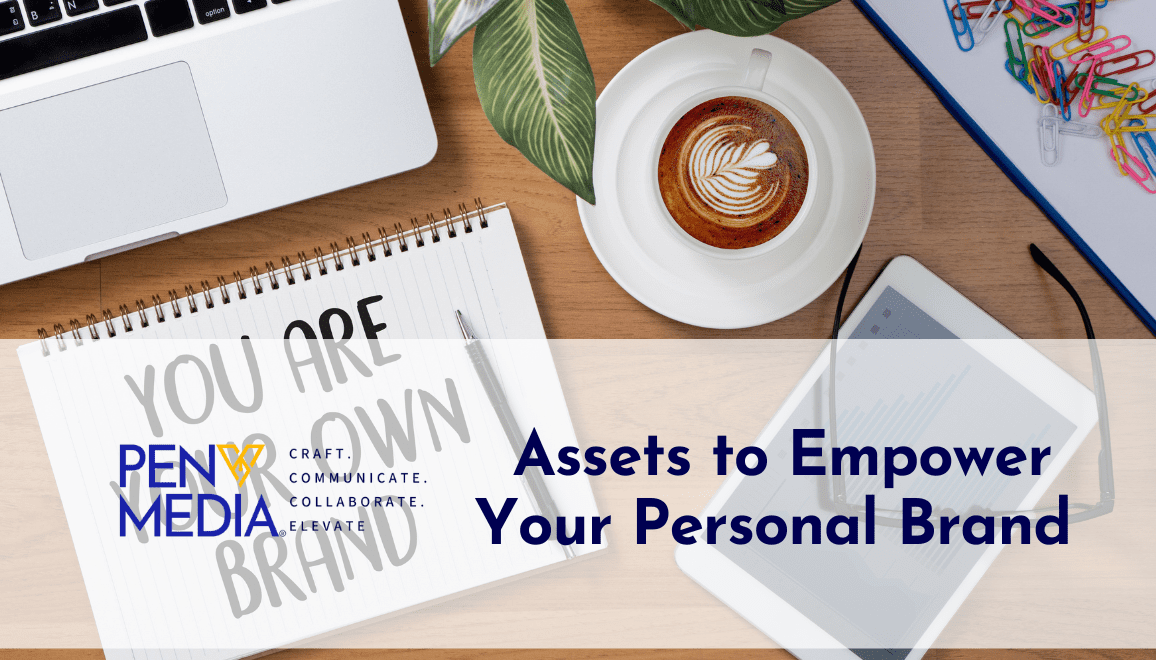Do you know what makes you unique and valuable in your field? Do you have a clear and compelling way to communicate your value to your target audience? How do you create a personal brand that reflects your true self and resonates with your ideal audience?
The first step is to determine your assets for your personal brand. Your assets are the qualities, attributes, and experiences that make you who you are and what you offer. They are the foundation of your value proposition and the core of your personal brand.
Let’s take a look at how you can identify and leverage your assets for your personal brand. By the end of this blog, you will have a better understanding of your strengths, skills, and passions, and how to use them to create a powerful and authentic personal brand.
How to Identify Your Assets for Your Personal Brand?
Identifying your assets is the process of discovering and articulating what makes you unique and valuable in your field. It is a way of increasing your self-awareness, confidence, and clarity. Identifying your assets can help you:
- Define your niche and target audience
- Craft your personal brand statement and story
- Align your personal brand with your goals and vision
But, what are personal branding assets?
The following fall in the list of personal branding assets:
- Skills: The abilities and competencies that you have acquired through education, training, or practice. For example, writing, coding, designing, speaking, etc.
- Strengths: The natural talents and aptitudes that you have or excel at. For example, creativity, problem-solving, leadership, etc.
- Experiences: The knowledge and insights that you have gained from your personal or professional background. For example, education, work, projects, hobbies, etc.
- Passions: The interests and causes that you care about and enjoy. For example, music, art, sports, social issues, etc.
- Values: The beliefs and principles that guide your decisions and actions. For example, integrity, excellence, innovation, etc.
Next, how do you identify your assets?
To identify your personal branding assets, you can use some tools or methods, such as:
- SWOT analysis: A framework that helps you analyze your strengths, weaknesses, opportunities, and threats in relation to your personal brand.
- Personal inventory: A list of questions that helps you reflect on your skills, strengths, experiences, passions, and values.
- Online assessments: A variety of tests that help you measure your personality, aptitude, interests, and preferences.
Another way to identify your assets is to ask for feedback from others, such as peers, mentors, or clients. They can provide you with valuable insights and perspectives on your assets and how they perceive your personal brand. You can ask them questions such as:
- What are the top three words that come to your mind when you think of me?
- What are the skills or strengths that you admire or appreciate about me?
- What are the areas or topics that you consider me an expert or a go-to person?
- What are the values or passions that you associate with me?
How to Leverage Your Assets?
Having identified your assets, how do you exactly leverage them?
Leveraging your assets is the process of using and showcasing your assets in your personal brand. It is how you demonstrate your value and personality to your target audience. Leveraging your assets can help you:
- Create and share relevant and engaging content
- Build and nurture relationships with your audience and network
- Establish and maintain your online presence and reputation
Here are practical ways to leverage your assets in your personal brand:
- Website: A platform that showcases your portfolio, resume, testimonials, and contact information. You can use your website to highlight your skills, strengths, experiences, and passions, and to tell your personal brand story.
- Content: A form of communication that educates, entertains, or inspires your audience. You can use content to showcase your expertise, credibility, and personality, and to provide value to your audience. Content can be in various formats, such as blogs, podcasts, videos, ebooks, etc.
- Social media: A channel that connects you with your audience and network. You can use social media to share your content, opinions, and insights, and to interact with your audience and network. Social media can be in various platforms, such as LinkedIn, Twitter, Instagram, etc.
- Interactions: A way of engaging with your audience and network. You can use interactions to build trust, rapport, and loyalty with your audience and network. Interactions can be in various modes, such as emails, messages, calls, meetings, events, etc.
You can also use the following tools or techniques to leverage your assets:
- Storytelling: A method that helps you craft and convey your personal brand story in a compelling and memorable way. You can use storytelling to connect with your audience on an emotional level and to illustrate your value proposition.
- Testimonials: A form of social proof that helps you showcase the results and benefits of your work or service. You can use testimonials to demonstrate your impact, authority, and reputation, and to increase your trustworthiness and credibility.
- Case studies: A form of content that helps you showcase the process and outcome of your work or service. You can use case studies to demonstrate your skills, strengths, and experiences, and to provide evidence and examples of your value proposition.
- Keywords: A set of words or phrases that help you optimize your online visibility and discoverability. You can use keywords to describe your assets, niche, and audience, and to rank higher in search engines and social media algorithms.
- Hashtags: A form of metadata that help you categorize and organize your content and social media posts. You can use hashtags to increase your reach, engagement, and relevance, and to join or create conversations and communities around your topics of interest.
- Elevator pitches: A short and concise statement that helps you introduce yourself and your personal brand. You can use elevator pitches to capture your audience’s attention and interest, and to communicate your value proposition and differentiation.
One of the keys to leveraging your assets is to be consistent, authentic, and strategic. You should aim to:
- Be consistent in your message, tone, and style across different platforms and channels
- Be authentic in your voice, values, and passions, and avoid copying or imitating others
- Be strategic in your goals, actions, and metrics, and avoid being random or reactive
Conclusion
Determining your assets for your personal brand is the first and crucial step to creating a powerful and authentic personal brand. By identifying and leveraging your assets, you can showcase your value and personality to your target audience and stand out from the crowd in your field.
If you want to evaluate and start enhancing your personal brand online, connect with our experts at PenVmedia for free personal branding assessment and get a personalized report on your strengths, weaknesses, and opportunities. You can also consult with PenVmedia for personalized advice on personal branding strategies and solutions.
So what are you waiting for? Start your personal branding journey today and maximise your potential!



Leave a Comment